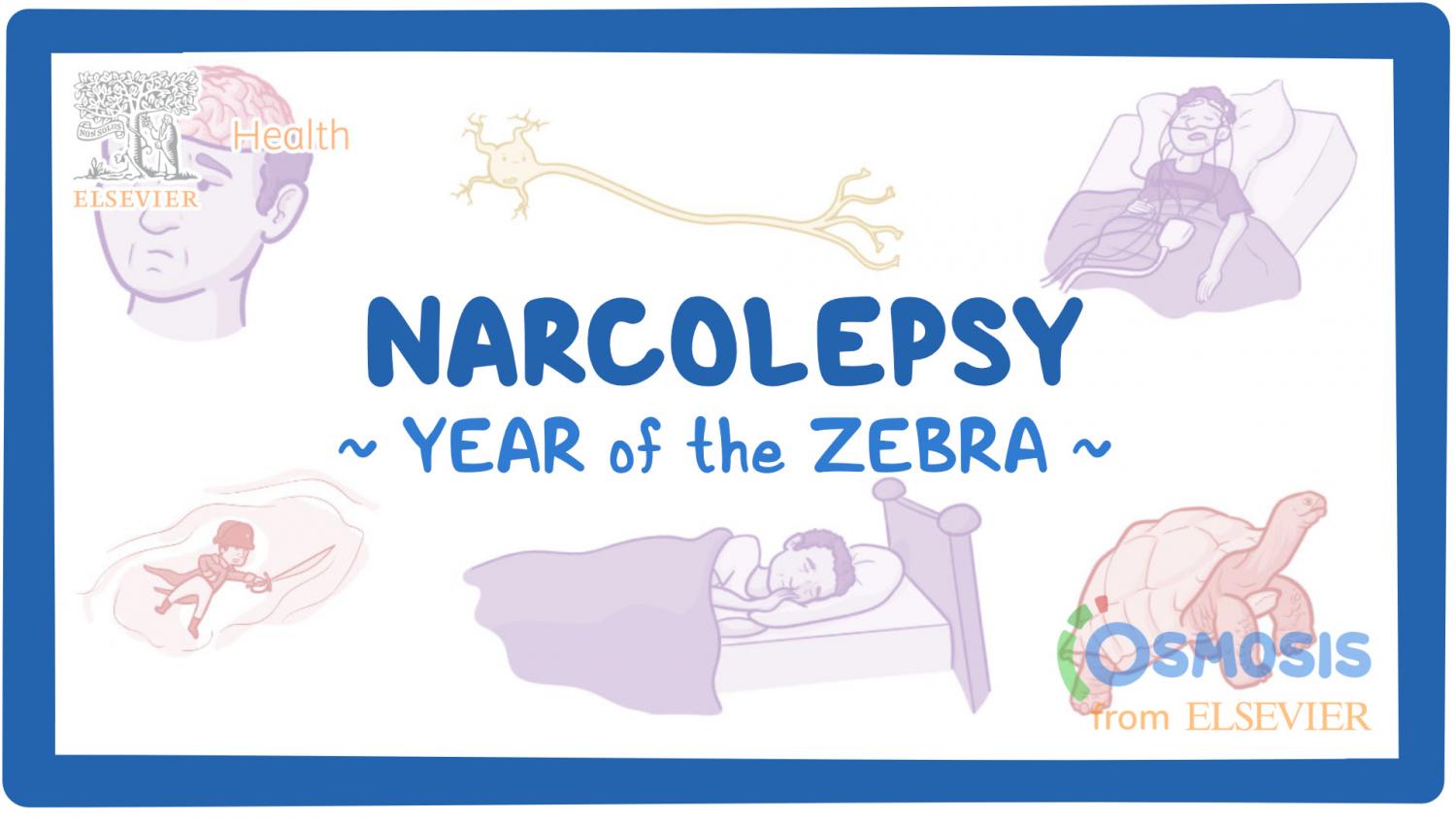
Zebra of the Week: Narcolepsy
Editor: Kelsey LaFayette, DNP, RN, FNP-C
"When you hear hoofbeats, think of horses, not zebras,” is a common saying in medical education that means you should think of common conditions first, instead of rare ones, in making a diagnosis. “Rare” is a relative term though and about 7,000 rare, or "zebra," conditions affect more than 350 million individuals worldwide. Although these conditions collectively affect an enormous number of people, each of these conditions individually is rare enough that it can be difficult to secure the resources to study them and to develop treatments and cures. Likewise, awareness of rare conditions may be low and health care professionals may not be familiar with their signs and symptoms making it more difficult to reach a correct diagnosis and provide effective treatments.
To increase knowledge about rare conditions, Osmosis and the National Organization for Rare Diseases (NORD) have collaborated on an initiative to bring education and awareness to the public. We are excited to be a part of this initiative because we believe everyone deserves quality health care, no matter how rare their condition.
Rare Disease Education: Narcolepsy
Imagine that you've just enjoyed a delicious, packed lunch. Now you sit down comfortably and your eyelids are getting heavy. You fight it for a while, but finally, you give in, and take a nap. While that feeling of daytime sleepiness occurs only sporadically for most people, it’s often a daily, even constant, occurrence for people affected by this week’s zebra, Narcolepsy.
Narcolepsy is a neurological sleep disorder that affects the brain's ability to control sleep-wake cycles. It is characterized by chronic, excessive daytime sleepiness. People with Narcolepsy may experience bouts of an irresistible urge to sleep (“sleep attacks”) that can happen at any moment, even while driving for instance.
They may also experience weakness and the sudden loss of voluntary muscle tone (called cataplexy), especially during times of intense emotions such as laughter and/or surprise. Another common symptom is vivid hallucinations that may occur at the beginning or at the end of a sleep period.
Although exact prevalence is unknown, it is thought to affect 1 in 2,000 people in the general population.
To learn more about the diagnosis and treatment of Narcolepsy, watch the dedicated Osmosis video on YouTube and Osmosis.org
Meet Carol, mother of three
Carol first began experiencing excessive fatigue and hallucinations during her teenage years, a puzzling set of symptoms that remained undiagnosed for many years despite multiple consultations with a variety of medical practitioners. The mystery condition profoundly affected every facet of her life: her social interactions, her role as a wife and mother, her professional choices.
When the diagnosis of narcolepsy was finally established, a sense of relief washed over her and her family. They finally had an understanding of what narcolepsy entails and the strategies to effectively handle it. Watch her journey unfold in the video above.
Organization Taking Strides
Project Sleep is a non-profit organization established in 2013, dedicated to the intersection of sleep health and sleep disorders. It was founded by Julie Flygare, a narcolepsy patient herself, who realized the lack of understanding of sleep disorders in society. The organization runs multiple campaigns, programs, and events to inspire individuals and communities.
On the advocacy end, the Sleep Advocacy Initiative took them to Capitol Hill to emphasize the significance of sleep research and argue for adequate funding in this field. The organization runs the Jack & Julie Scholarship program to support students diagnosed with narcolepsy and idiopathic hypersomnia. In addition to these initiatives, Julie Flygare also hosts Narcolepsy Nerd Alert, an educational video series that explores the diverse aspects of living with narcolepsy. Project Sleep has also developed the Rising Voices of Narcolepsy program to empower those living with narcolepsy to share their stories and experiences effectively.
One of the key milestones for Project Sleep is that it co-led the establishment of World Narcolepsy Day, commemorated annually on September 22nd.
Ultimately, Project Sleep's vision is to make sleep "cool" and to ensure that sleep disorders receive the attention and understanding they deserve within broader conversations about health.
More Information on Narcolepsy
